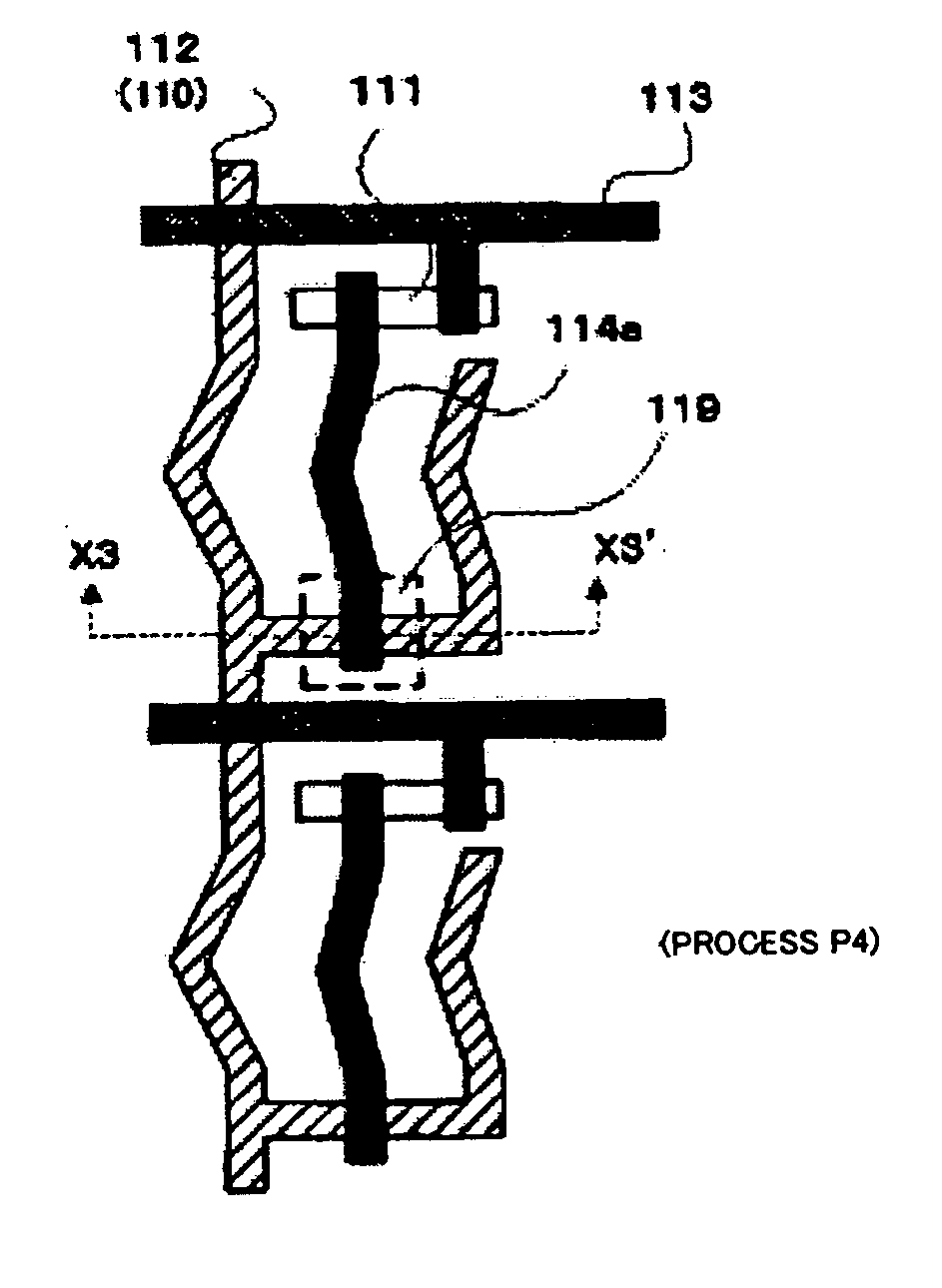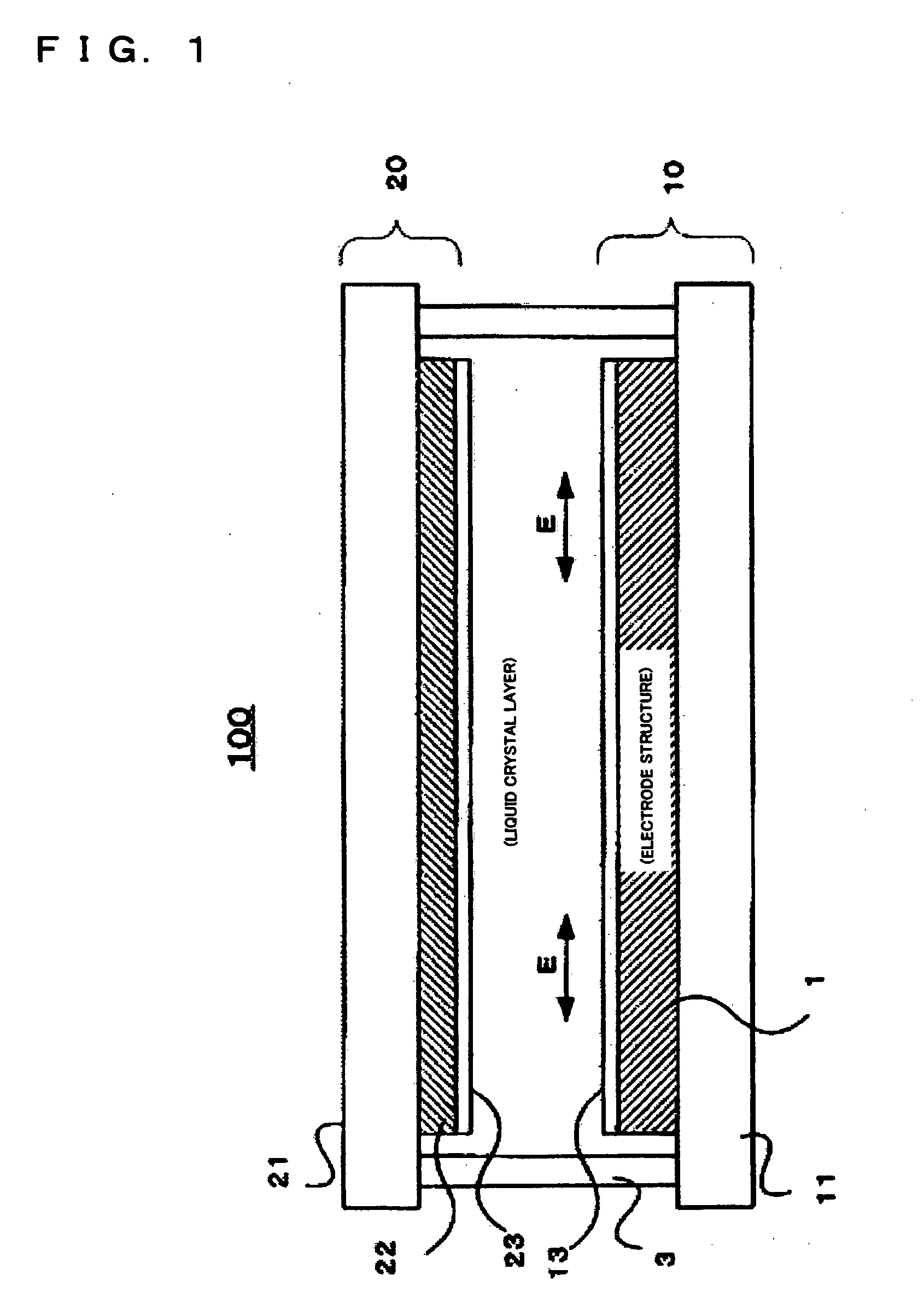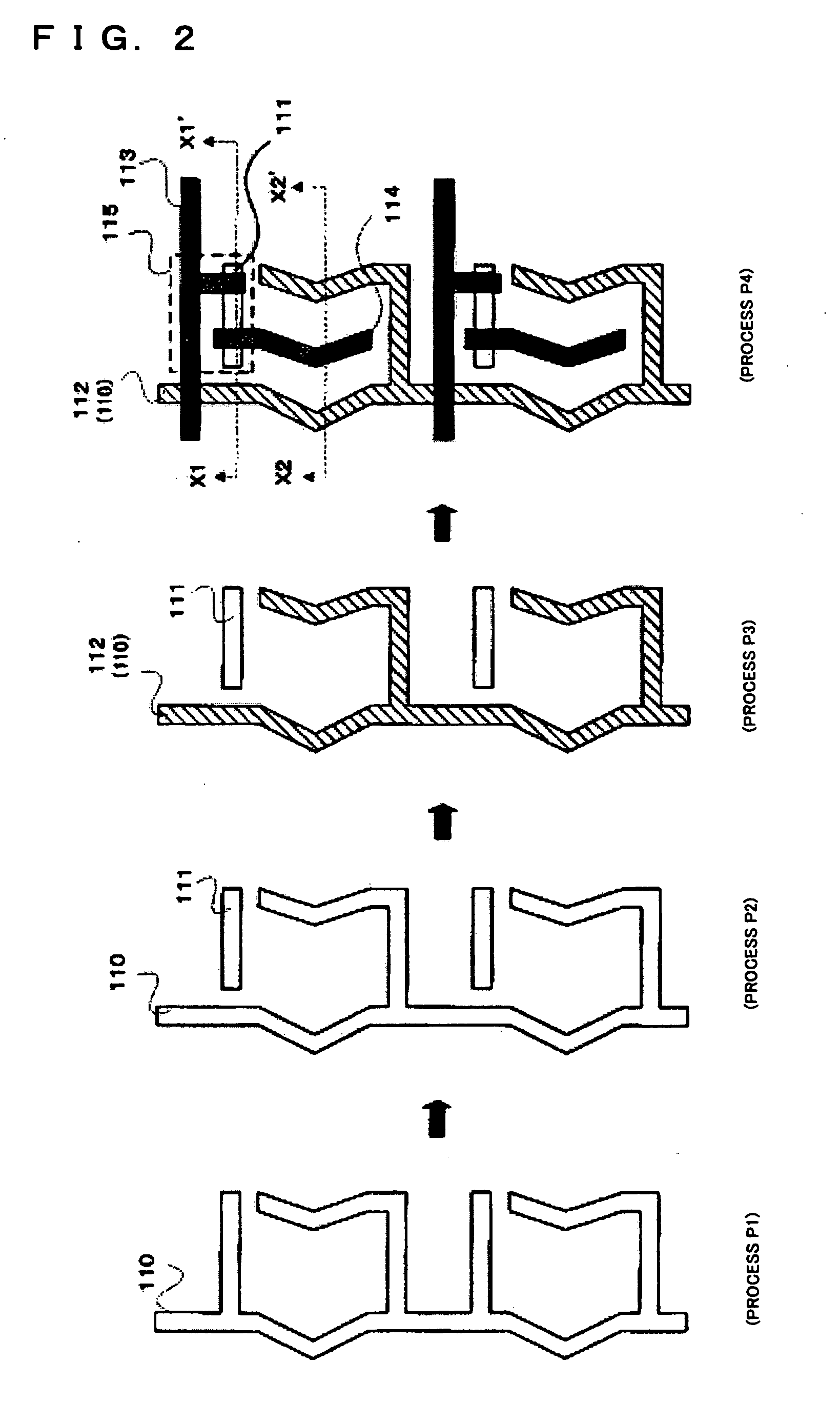Electro-optical device and method of manufacturing the same
a technology of optical devices and optical components, applied in the field of optical components, can solve the problems of reducing aperture ratio, deteriorating display quality, increasing manufacturing cost, etc., and achieve the effect of low cost and simple manufacturing process
- Summary
- Abstract
- Description
- Claims
- Application Information
AI Technical Summary
Benefits of technology
Problems solved by technology
Method used
Image
Examples
first exemplary embodiment
[0065] A first exemplary embodiment comprises an IPS mode electrode structure 1. FIG. 2 is a schematic plan view showing a manufacturing process of a portion of an electrode structure according to the first exemplary embodiment, and FIGS. 3A-D and 4A-D are schematic partial cross-sectional views thereof. Moreover, FIG. 2 shows an area corresponding to two pixels vertically disposed. FIG. 3 is a schematic cross-sectional view taken along line X1-X1′ of FIG. 2, and FIG. 4 is a schematic cross-sectional view taken along line X2-X2′ of FIG. 2.
[0066] According to a method of manufacturing the electrode structure 1, as shown in FIGS. 2 to 4, a signal electrode 110 made of tantalum (Ta) is formed on the transparent substrate 11 in a process P1. Specifically, tantalum is formed on the transparent substrate 11 made of glass by a sputtering process and then is shaped by a photolithography process as shown in FIGS. 2 to 4. Then, the shaped tantalum is oxidized by anode oxidization to form an ...
second exemplary embodiment
[0072] Next, a second exemplary embodiment will be now described. FIG. 5A is a schematic plan view showing an electrode structure 1 according to the second exemplary embodiment, and FIG. 5B is a schematic sectional view taken along line X3-X3′ of FIG. 5A. As compared with FIG. 2, the electrode structure 1 of the second exemplary embodiment is fundamentally the same as that of the first exemplary embodiment. However, the second exemplary embodiment is different from the first exemplary embodiment in that a storage capacitor is formed by crossing the pixel electrode 114a and the signal electrode 110 in an area 119 indicated by a broken line.
[0073] Assuming that a capacitor of the TFD element portion 115 is CTFD and the storage capacitor of the area 119 is CPIX, it is possible to obtain a satisfactory contrast by setting the ratio of CPIX / CTFD to be about 6 through 12.
[0074] A specific manufacturing method is almost the same as the manufacturing method of the first exemplary embodime...
third exemplary embodiment
[0075] Next, a third exemplary embodiment will be now described. FIG. 6A is a schematic plan view showing the electrode structure 1 according to a first exemplary example of a third exemplary embodiment, and FIG. 6B is a schematic sectional view taken along line X4-X4′ of FIG. 6A. The electrode structure 1 according to the first exemplary example of the third exemplary embodiment is fundamentally the same or similar as that of the first exemplary embodiment. However, in the third exemplary embodiment, as shown in FIG. 6A, a chromium electrode 116 or 117 is further formed on the signal electrode 110, thereby reducing resistance of the signal electrode 110. As described in the first exemplary embodiment, in a process P3, an oxide film is formed as an insulating layer 112 on a surface of the signal electrode 110 by anode-oxidizing the signal electrode 110. As a result, the signal electrode 110 decreases in film thickness by the oxide film 112, thereby increasing resistance. Thus, in th...
PUM
| Property | Measurement | Unit |
|---|---|---|
| electro-optical | aaaaa | aaaaa |
| non-linear resistance | aaaaa | aaaaa |
| insulating | aaaaa | aaaaa |
Abstract
Description
Claims
Application Information
 Login to View More
Login to View More - R&D
- Intellectual Property
- Life Sciences
- Materials
- Tech Scout
- Unparalleled Data Quality
- Higher Quality Content
- 60% Fewer Hallucinations
Browse by: Latest US Patents, China's latest patents, Technical Efficacy Thesaurus, Application Domain, Technology Topic, Popular Technical Reports.
© 2025 PatSnap. All rights reserved.Legal|Privacy policy|Modern Slavery Act Transparency Statement|Sitemap|About US| Contact US: help@patsnap.com



